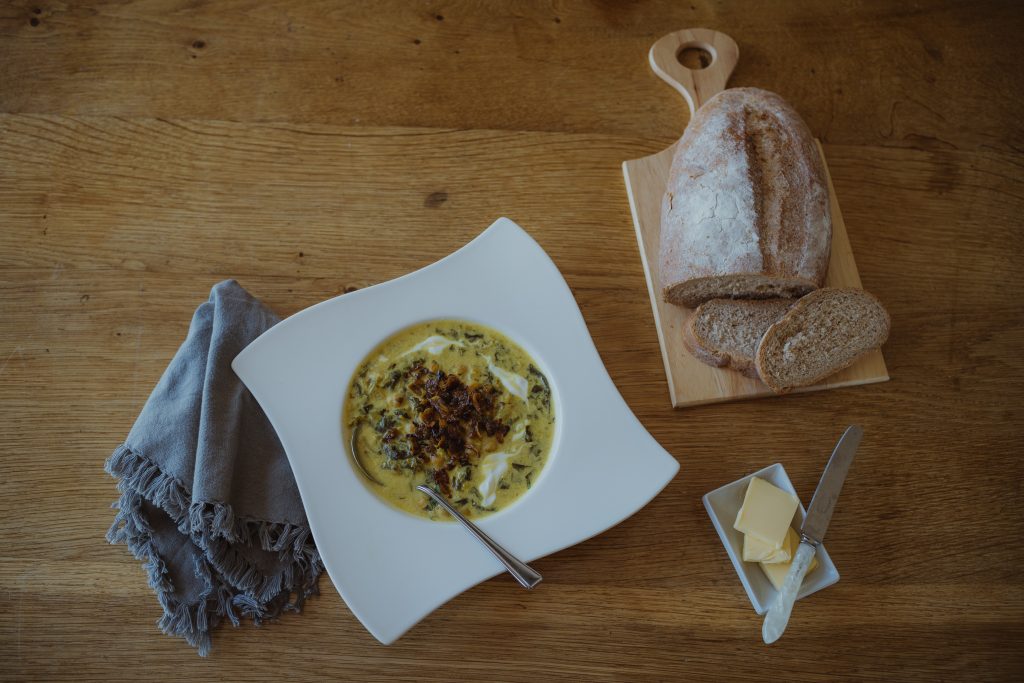I put seaweed on my soft fruit plants this year, and as a result, I think I imported a load of orache seeds. If you don’t know, orache is a weed that grows on the upper shore at this time of year, and it is delicious. I’ve got more than I can eat at the moment, the most successful vegetable in my garden at the moment. I also had some left-over wholewheat pasta courtesy of my super-healthy children, so I used that too. Plain pasta is good too.
INGREDIENTS:
- 200g pasta
- salt
- enough orache to feed four people (no idea of weight, it just looked OK)
- 2 cloves of garlic, peeled and finely chopped, not crushed
- olive oil
- freshly ground black pepper
- a squeeze of orange juice
- 50g pine-nuts, toasted
- 50g freshly grated parmesan cheese
METHOD:
- Fill a large pan with water, bring to the boil and then add the pasta along with a good spoonful of salt, and bring the water back to the boil. Let the pasta cook as long as the pack says (8 minutes for plain pasta, 11 minutes for wholewheat is the usual thing)
- A couple of minutes before the pasta is done, stir-fry the orache and garlic in a bit of olive oil for a couple of minutes, until the orache has wilted. Season with salt, pepper and lemon juice
- Drain the cooked pasta and the put it back in the warm pan. Add the orache and the pine nuts and parmesan. Give it all a quick stir, check the seasoning, and serve.
